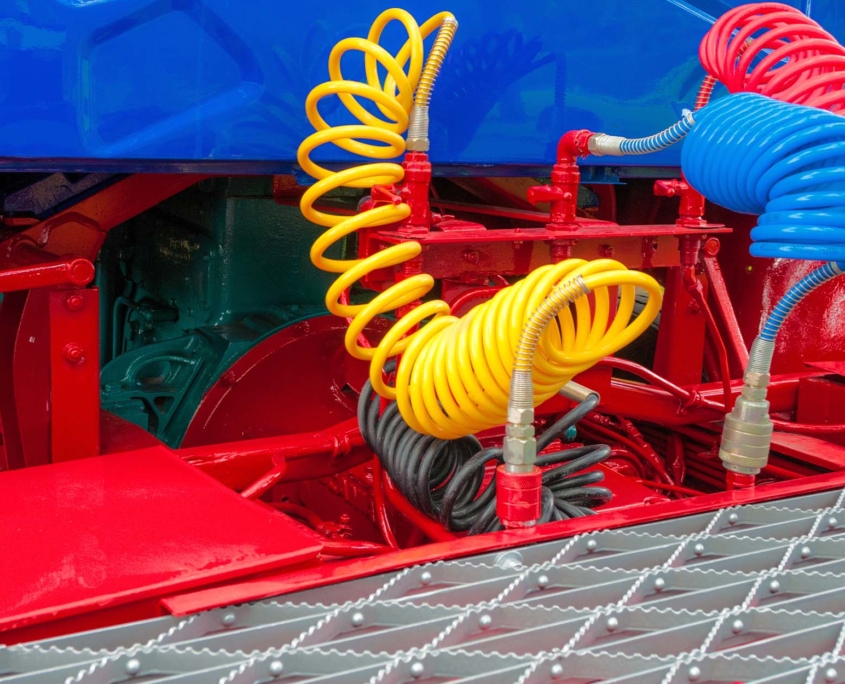
What Are Hydraulics Systems?
Hydraulics systems are designed specifically for heavy equipment. Learn more about their applications below.
Hydraulics systems are a vital part of many machines and vehicles. But what are hydraulics systems, and how do they work?
In this article, we’ll discuss what hydraulics systems are and how they work. We’ll also take a look at the different types of hydraulic systems that are used in machines and vehicles.Let’s start with the basics.
What are Hydraulics Systems?
Hydraulics systems are a type of fluid power system that use a liquid to transmit force from one point to another.
The liquid is usually an oil or water-based fluid. Hydraulics systems are often used in machines and vehicles because they can generate a lot of force with relatively little effort.
The History of Hydraulics Systems
Hydraulics systems have been used for thousands of years. The first recorded use of hydraulics was in ancient Egypt around 2500 B.C. Hydraulic systems were used to power waterwheels and irrigation systems.
The word “hydraulics” comes from the Greek word “hydraulo,” which means “water.” Leonardo da Vinci first used the term in the 15th century to describe how water could be used to power machines.
Da Vinci designed a number of hydraulic devices, but they were never built during his lifetime. It wasn’t until the 18th century that hydraulics began to be used in practical applications.
How Does a Hydraulics System Work?
The basic principle behind hydraulics is that when a force is applied to a small area, it creates a larger force on a larger area. This is because the fluid is compressed when the force is applied.
The amount of force that is generated depends on the size of the piston and the pressure of the fluid. Hydraulic systems use this principle to generate large amounts of force.
Hydraulic systems are often used in construction equipment, such as excavators and bulldozers. Hydraulic systems are also used in car brakes and lifting equipment.
Types of Hydraulic Systems
There are two main types of hydraulic systems: closed loop and open loop. Closed loop systems are sealed so that the fluid cannot escape. This means that the pressure in the system can be controlled more accurately.
Open loop systems are not sealed, meaning the fluid can leak out. These systems are less expensive to build, but they are not as efficient as closed loop systems.
Hydraulic systems can also be classified by their power source: pneumatic, electric, or manual.
Pneumatic Hydraulic Systems
Pneumatic hydraulic systems use compressed air to power the hydraulic system. These systems are often used in construction equipment and heavy machinery.
Pneumatic hydraulic systems are less expensive than other types of hydraulic systems, but they are not as efficient. Pneumatic systems are also susceptible to leaks and require regular maintenance.
Electric Hydraulic Systems
Electro hydraulic systems use electric motors to power the system. These systems are more expensive than pneumatic hydraulic systems, but they are more efficient.
Electro hydraulic components are often used in car brakes and lifting equipment. Electric hydraulic systems require less maintenance than pneumatic hydraulic systems, but they are more expensive to operate.
Manual Hydraulic Systems
Manual hydraulic systems use a hand pump to power the hydraulic system. These systems are the least expensive to build, but they are also the least efficient.
Manual hydraulic systems are often used in small construction equipment and lifting equipment. They require regular maintenance and can be difficult to operate.
Advantages of Hydraulic Systems
Hydraulic systems have a number of advantages over other types of fluid power systems. For example, they can create exponential force with little effort.
Hydraulic systems are also more efficient than pneumatic and manual systems.
They are less likely to leak than pneumatic systems, and they require less maintenance than manual systems. These systems can also be powered by electricity, making them more versatile than pneumatic or manual systems.
Drawbacks of Hydraulic Systems
However, Hydraulic systems have a number of drawbacks. For example, they are more expensive than pneumatic and manual systems. Hydraulic systems also require regular maintenance.
Hydraulic systems can be difficult to operate, and they can be susceptible to leaks. Hydraulic systems are also less efficient than electric systems.
Despite these drawbacks, hydraulic systems are often used in construction equipment, car brakes, and lifting equipment. Hydraulic systems have a number of advantages that make them the preferred choice for many applications.
What are Some Examples of Hydraulics-Based Machinery?
Hydraulic systems are used in a variety of machinery, including:
- Construction equipment: Hydraulic systems are often used in excavators and bulldozers; they are also used in small construction equipment, such as jackhammers.
- Lifting equipment: Hydraulic systems are often used in cranes and forklifts and are also used in car lifts and wheelchair lifts.
- Fluid power systems: Hydraulic systems are often used in hydraulic presses and hydraulic motors, as well as in hydraulic pumps and valves.
Things to Consider When Buying a Hydraulic System
When buying a hydraulic system, there are a few things to consider:
- The type of power source: Hydraulic systems can be powered by electricity, pneumatic pressure, or manual pumps.
- The intended use: Hydraulic systems can be used for construction, lifting, or fluid power.
- The size and capacity: Hydraulic systems come in a variety of sizes and capacities. Choose one that is large enough to handle the intended application.
- The price: Hydraulic systems vary in price depending on the type of system and the features included. Compare prices to find the best deal.
Receive Hydraulic System Maintenance from White Tank & Truck Repair
White Tank & Truck Repair is your one-stop shop for all your hydraulic system needs. We offer sales, service, and maintenance for all types of hydraulic systems. Contact us today to learn more about our hydraulic services.







